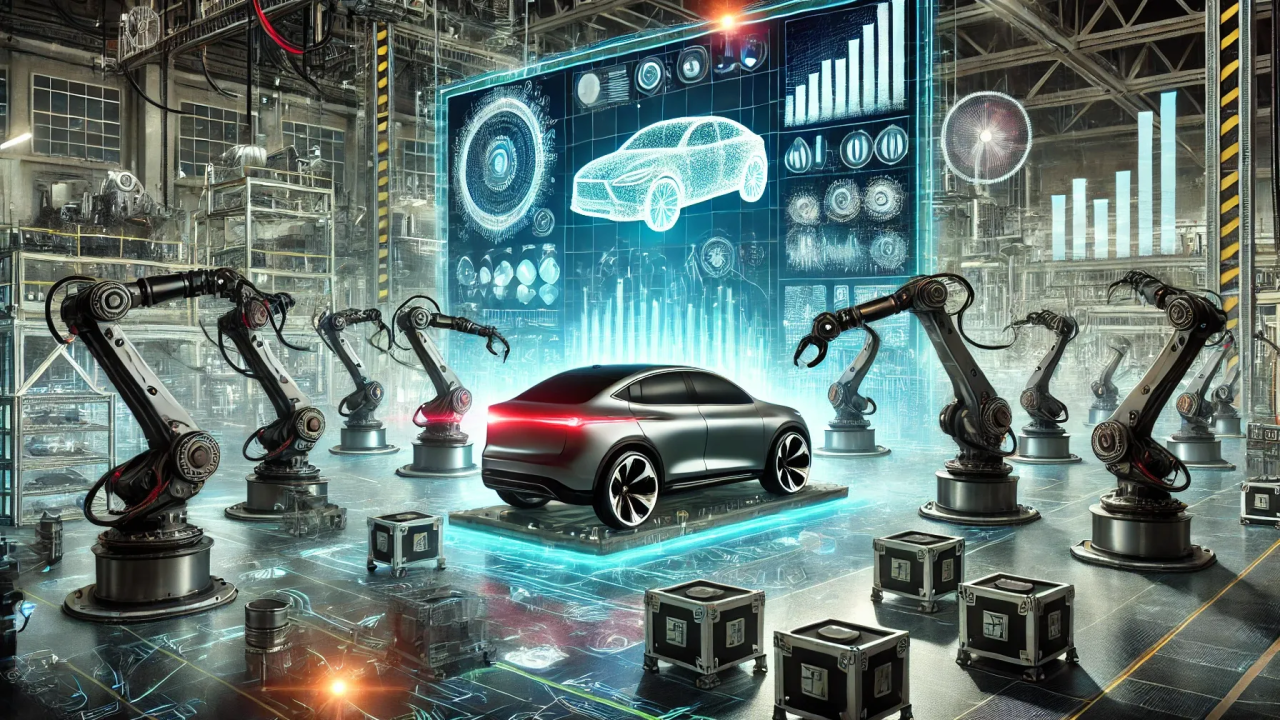Automakers Turn to Modular and Robotic Assembly for Smarter Vehicle Production
Technology Integration TE Technology IntegrationPosted by TEAdmin on 2025-03-10 06:29:32 |
Share: Facebook | Twitter | Whatsapp | Linkedin Visits: 16

As software-defined vehicles (SDVs) continue to evolve, automakers are exploring new manufacturing techniques to enhance efficiency and reduce costs. While improving circuit efficiency is essential, streamlining the assembly process is equally critical. To address this challenge, companies like TE Connectivity are rethinking traditional wiring harnesses and embracing a modular approach to vehicle design.
Instead of distributing power through complex, sprawling wiring harnesses, manufacturers are now bundling components into modules and using shorter, jumper-type cable assemblies to connect them. This shift not only simplifies electrical distribution but also enables the use of automated technologies to integrate these modules seamlessly into the vehicle. By adopting this method, automakers can accelerate production timelines and lower manufacturing costs.
The standardization of vehicle components plays a crucial role in enabling robotic assembly. By designing modules with consistent interfaces, component manufacturers can incorporate automation directly into module production. This approach allows carmakers to use advanced robotic systems to assemble vehicles with greater precision, reducing reliance on manual labor and improving overall efficiency.
One of the key advantages of robotic assembly is the potential to simplify electrical connections further. Traditional wiring harnesses often require lever systems or secondary locks to ensure connectors are properly seated. However, the precision of robotic assembly minimizes the need for these additional components, streamlining the manufacturing process and enhancing reliability.
The automotive industry’s shift toward modular design and robotic assembly marks a significant step forward in vehicle production. As SDVs become more sophisticated, manufacturers are leveraging cutting-edge technologies to create smarter, more efficient assembly lines. These advancements not only reduce costs but also improve the scalability and adaptability of modern vehicle manufacturing, setting the stage for the next generation of intelligent, software-driven automobiles.
Search
Categories
Recent News
- Hyderabad Police Uncover RBI Scam: Beware of Fake Links
- Hyderabad Firm's Email Hacked: A Costly Lesson in Cybercrime
- Indian Schools Face a Hidden Drug Crisis
- Fake Deposit Links: RBI's Urgent Public Alert
- Hyderabad's Fight Against Drugs: A Collaborative Approach
- Hyderabad's Government Buildings Targeted: A Hoax Bomb Scare
- Senior Citizens Lose Millions in Hyderabad's Digital Scam Spree
- Hyderabad's Anti-Narcotics Drive: 11 Detained for Ganja Consumption
Popular News
- Navigating IPO Market Dynamics Amid Volatility and Regulatory Changes
- Innovative Green Practices and Environmental Initiative
- Massive Worldwide Microsoft Outage Disrupts Multiple Sectors
- తెలుగుదేశం పార్టీ - పేదరికాన్ని నిర్మూలించడంలో వాగ్దానం
- Universities Embrace Remote Learning Technologies Amidst Ongoing Pandemic